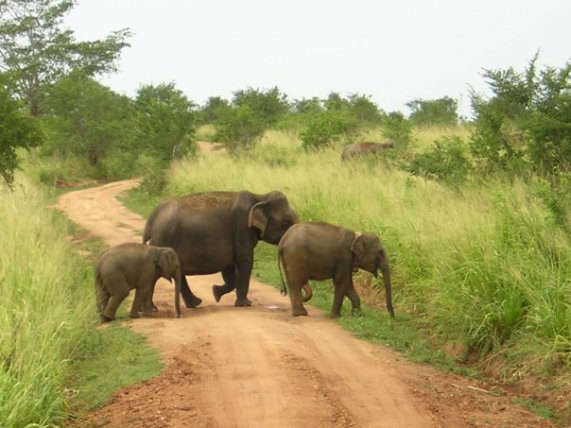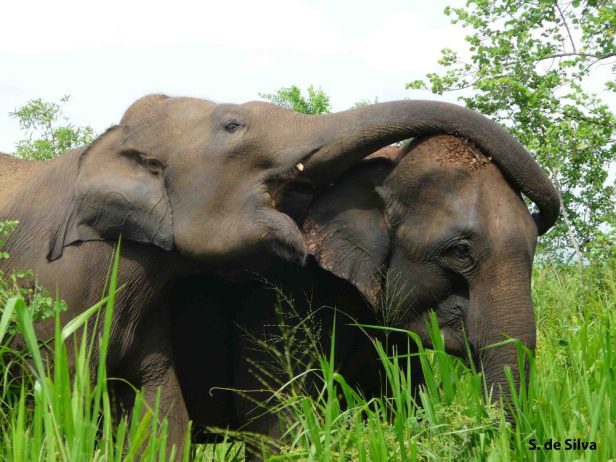by DJ, USW, and SdS (Photos by DJ &UWERP)
The female orphaned elephant calf found in Ethimale, Southern Sri Lanka rescued and brought to Elephant Transit Home (ETH), Udawalawa was later named Ethimali. After several years of rehabilitation, she was released to Uda Walawe National Park in March 2004, when she was about 4 years old, with another 10 rehabilitated juveniles.
Some young females at the ETH show an array of maternal or allomothering characters from an early age, despite being orphans themselves. They seem to select calves out of new arrivals and try to be as attentive to them as possible. She frequently checks whether her orphan is alright and will be the first to respond if the orphan screams or is attacked by another calf. She keeps continuous company for the orphan and with time, it starts to follow her most of the day. When the orphan seeks comfort she allows it to suck on her – in the absence of real milk, even the tip of an ear will do!

Ethimali (wearing a belt around the neck) with Mahee, a wild adult female and her calf in 2004.
Continue reading →





![[208] and calf](https://asianelephant.files.wordpress.com/2015/11/208andcalf.jpg?w=670&h=447)




